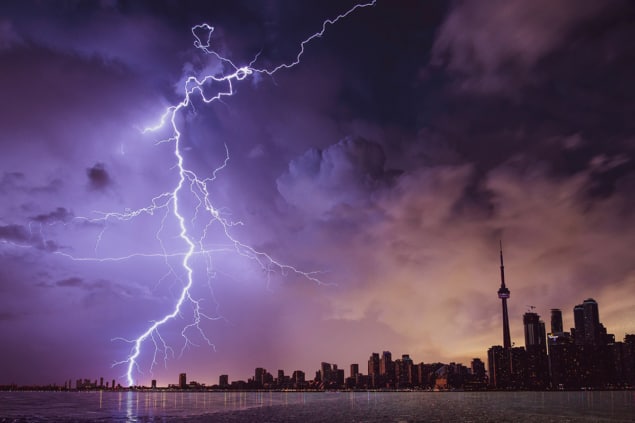
A warmer planet with rising pollution, population density and urbanization is intensifying human exposure to lightning hazards, warn scientists.
Evidence points to a concentration of lightning strikes around major urban areas compared with their rural surroundings. It’s estimated that 55% of the world’s population lives in cities; by 2050 this proportion could be as high as two-thirds.
“The urban areas of major cities cover just a small percentage of the Earth’s surface, yet they exert a noticeable and non-negligible effect on their surroundings,” writes Yoav Yair of the Interdisciplinary Center (IDC) Herzliya, Israel in Environmental Research Letters (ERL).
Yair and his colleagues are paying close attention to the effects of mega-cities on lightning properties – analysis that could benefit the inhabitants of Beijing, Tokyo, Shanghai, São Paulo and Mexico City.
“New lightning detection networks, such as ENTLN [Earth Networks Total Lightning Network] and other networks, offer more detailed information on physical characteristics such as peak current, polarity (negative or positive), and multiplicity,” says Yair. “This information can then be compared with ambient conditions such as particle pollution (PM2.5) and the urban topography – for example, areas where high-rise buildings and skyscrapers are located – to find correlations and to understand the physical mechanisms by which cities enhance lightning.”
Yair’s main field of research is atmospheric electricity, including understanding the physical processes behind lightning and identifying ways to forecast lightning. More recently, he’s considered global trends in lightning strikes and severe weather, and their impacts on future generations.
As well as threatening human lives directly, lightning can also cause forest fires, damage wind turbines and disrupt aviation and other transport. Aircraft are designed to withstand lightning strikes but storms can be a problem for airports. Shipping lanes could also see more lighting strikes as sea freight volumes rise and ship particle emissions increase, affecting clouds and charging processes in the sky.
Yair is keen to see improvements in short-term lightning forecasts, as well as how outcomes are communicated, for example, by indicating the probability of occurrence, location and timing.
Today, building and design codes help mitigate the risk of lightning strikes to major infrastructure, but what about the population at large?
“Many people are unaware of the safety rules that should be followed in order to minimize vulnerability to lightning hazards and this lack of understanding should be addressed in formal and non-formal educational settings – much like earthquake hazards are treated in Japan”, he says.
A few years ago, as part of the European COST Action (P18: Physics of Lightning), Yair and others helped produce a leaflet of lightning safety rules, which has been translated into multiple languages. The safety literature included a comic strip designed for younger audiences dubbed “Ziggie and Zack: Your Lightning Heroes”.
Hundreds of people die every year from lightning strikes and while a leaflet may seem like a simple concept, it could save lives.
Information can also be accessed via the web – for example, agencies such as the US National Weather Service list a range of lightning fact-sheets.



